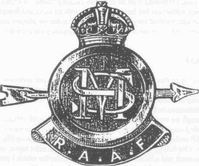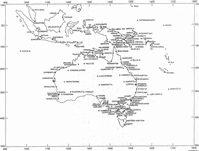


War History of the Australian Meteorological Service
Foreword
Preface
Introduction
Chapter 1: D.Met.S.—Australia's Wartime Weather Service
Chapter 2: The Weather Factor in Warfare
Chapter 3: Met in the Retreat
Chapter 4: Met in the Advance
Chapter 5: Meteorology in Aviation
Chapter 6: Central Forecasting Services
Chapter 7: Met With the Army
Chapter 8: Research and Personnel Training
Chapter 9: Instrumental Development and Maintenance
Chapter 10: Scientific Developments in the RAAF Meteorological Service
Chapter 11: Divisional Bureaux and Their Work
Appendix 1: List of Reports Provided by D.Met.S. for Advances Operational Planning and Other Purposes
Appendix 2: List of Service Personnel RAAF Meteorological Service
Appendix 3: List of Civilian Personnel Who Worked Together with Service Personnel of the RAAF Meteorological Service
Appendix 4: List of Locations at which RAAF Meteorological Service Personnel Served
Index
Search
Help
Contact us

When war came to Australia on 3 September 1939, it found a nation inadequately prepared for the long and bitter struggle that lay ahead. Not least of the disabilities was the relatively undeveloped state of many technical services necessary to the widespread demands of total war, but as our strength in trained men and guns, in ships and aircraft, grew with the passing months, so did Australia advance in the technical services for fighting forces. In some instances entirely new organisations were established and developed, in others existing skeleton staffs and establishments were expanded to meet the requirements of armed forces becoming rapidly more numerous and more complex in their technical demands.
This volume tells the story of possibly the most unique metamorphosis—that of a Commonwealth Government departmental service that changed over almost in its entirety from a widespread civil function to become an integral part of the war machine on land and sea and in the air.
At the outbreak, the Australian meteorological organisation was a long established branch of the Department of the Interior, providing weather services of many varied types to the community. By direction of the War Cabinet, it passed to the control of the Department of Air in July 1940 with the designated task of providing all meteorological services required by the armed services, while at the same time continuing to meet civil requirements.
Experience proved the wisdom of this step. As the Directorate of Meteorological Services, RAAF, the organisation brought into operation a network of forecasting and observing stations stretching from Borneo to the Southern Ocean, from lonely Cocos Island to New Britain, making possible efficient operation of the amazingly long air-routes and sea lanes that contributed so much to victory. 'Met' went into the forward lines with the Army to provide essential ballistic information for our gunners and the operational services required for offensive developments in the island areas of the South-West Pacific theatre. Through naval wireless installations the Directorate supplied the weather information required by our fighting ships throughout the wide South-West Pacific area and in the adjoining regions of the Indian Ocean. Long range forecasting, sometimes for more than a week ahead, was initiated for operational planning. Many operations, large and small, were planned and carried through with the weather factors carefully assessed in the timing of movements by land, sea and air.

Meanwhile, the civil community in Australia was provided with all normal weather services, save those which security regulations curtailed, and a sustained programme of training and of objective research was carried on at central headquarters of the Directorate in Melbourne and at the combined analysis unit at General Headquarters, Brisbane.
In his War Report the Chief of the Air Staff (Air Marshal Jones) included the following appreciation of the wartime work of his Meteorological Service:
"It earned", he said, "and retained, the confidence of Allied operational commanders and of associated Allied weather organisations."
H. N. Warren
Director
1 December 1947

People in Bright Sparcs - Warren, Herbert Norman
 |
Bureau of Meteorology |  |
© Online Edition Australian Science and Technology Heritage Centre and Bureau of Meteorology 2001
Published by Australian Science and Technology Heritage Centre, using the Web Academic Resource Publisher
http://www.austehc.unimelb.edu.au/fam/0626.html